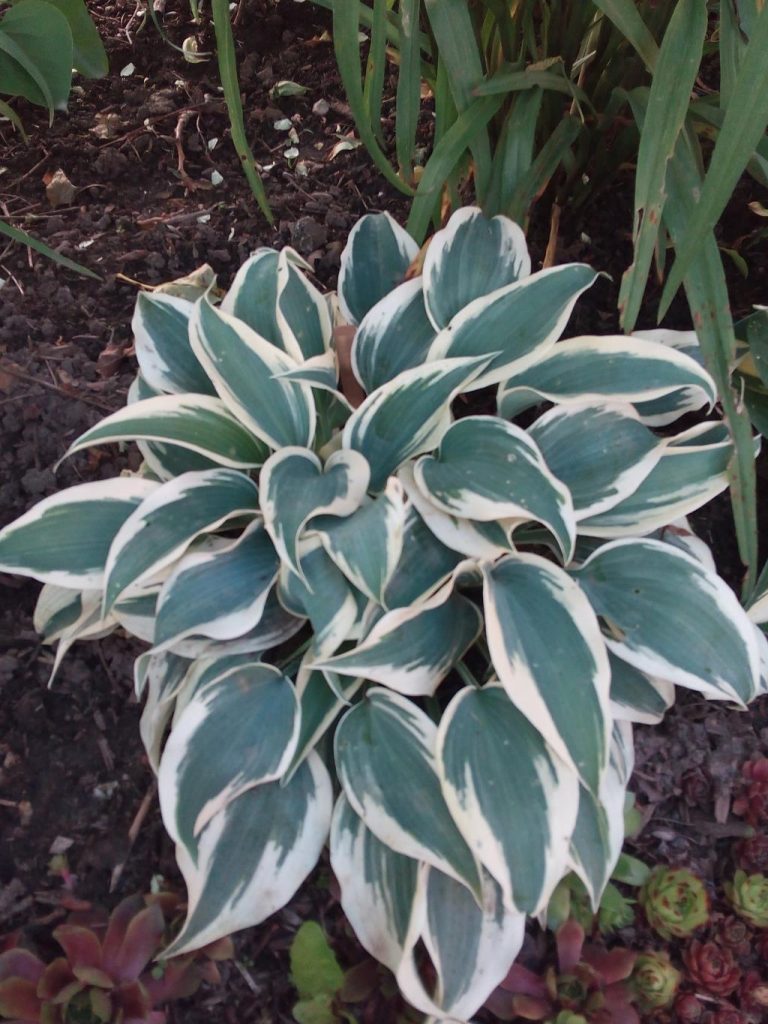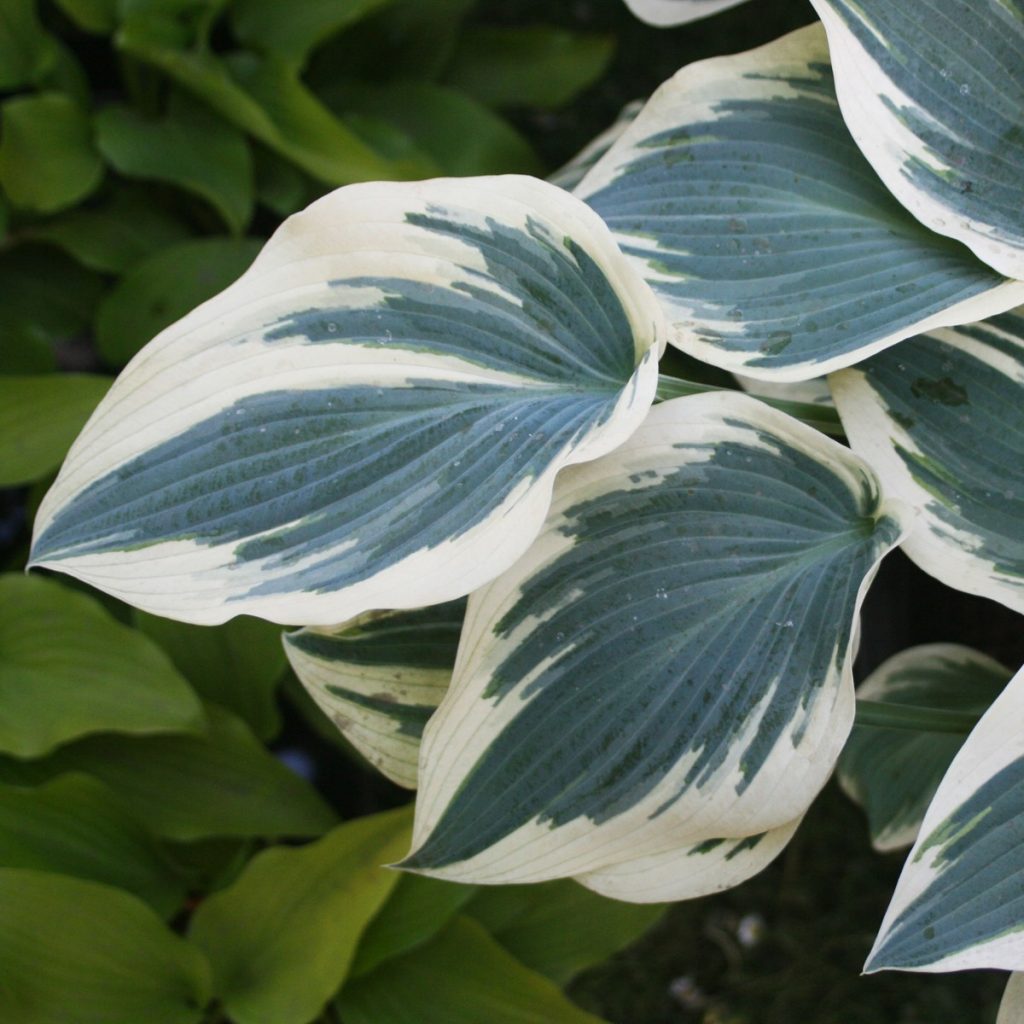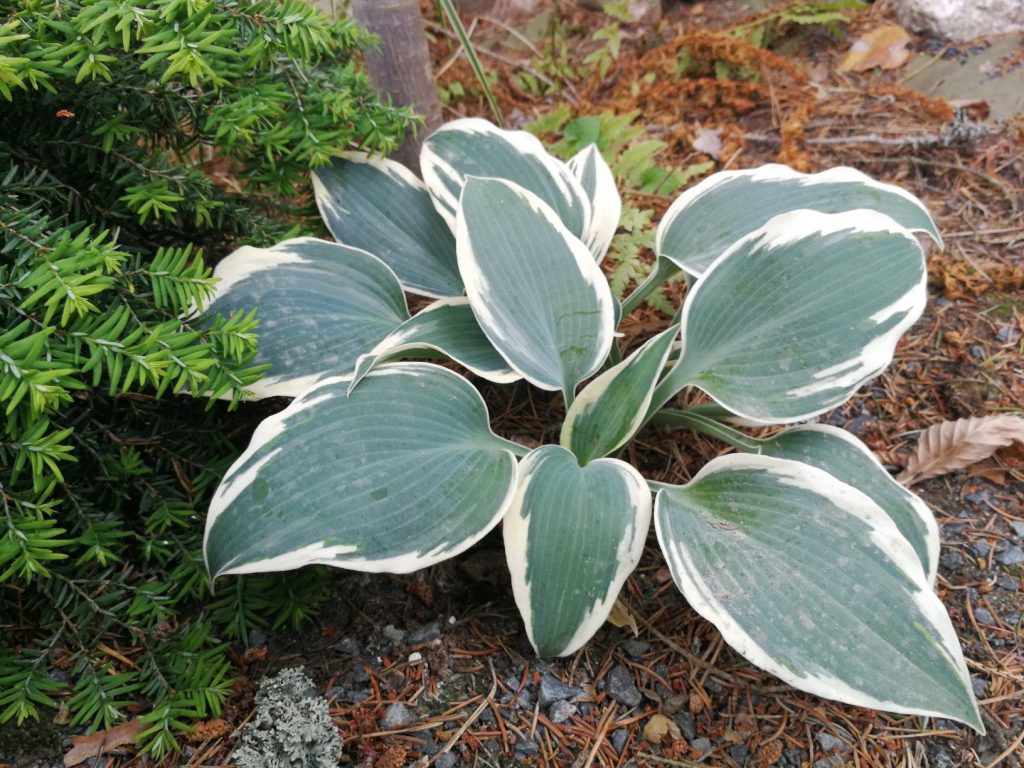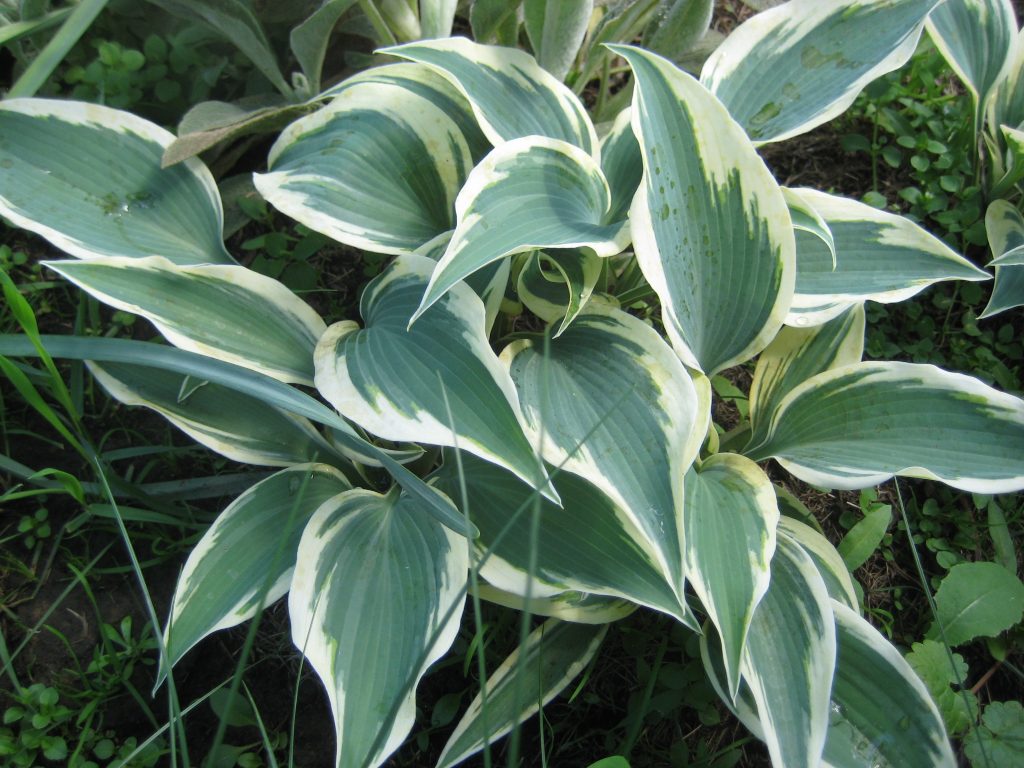Hosta Blue Ivory - the subtleties of planting and growing
Hosta Blue Ivory is a spectacular perennial shrub from the Asparagus family. This variety has been known since 2009 and is a sport from the Halcyon funkia (originators: B. Meyer, L. Klinkhamer). The translation of the name is a combination of colors: "blue" and "ivory", which characterizes the original colors of the decorative leaves.

Hosta blue ivory description
Description
Blue Ivory is a small hosta, reaching a height of 25-40 cm.The diameter of the bush is 50-60 cm.
The leaves are very dense, waxy, heart-shaped, somewhat narrowed to the tip (length - 18-20 cm, width - 13-15 cm). The central part of the leaf plate is bluish-blue, the dashed edge is cream.
Flowering begins in June-July. Inflorescences of small light lilac bells without a pronounced odor appear on high peduncles. In one place, Blue Ivory can grow for 10-15 years.
Landing features
For planting, you can purchase a cut with open roots or a young plant planted in a container. In the first case, it is better to plant funkia in spring (in April), in the second - throughout the summer. When buying, pay close attention to the quality of the product - there should be no extraneous spots or "mosaics" on the leaves.
Hosta Blue Ivory grows well in the shade and in the sun, but light shade will be the best option for her.
A lack of light will make the leaves less bright, and direct sunlight can cause burns.
The plant prefers fertile soil, but can grow on any soil with a neutral or slightly acidic reaction. In case of dangerous proximity to groundwater, an embankment must be built and drainage must be laid before planting.
They dig a hole 50-70 cm deep and wide, lay drainage from pebbles or broken bricks. The next steps:
- The earth is mixed with compost and the hole is filled by a third, and it is poured with a bucket of water.
- A container seedling is transferred along with a lump (a function with an open root system is carefully placed on a hill of soil mixture, and the roots are straightened along the slopes) and watered again.
- The remaining substrate is poured and tamped, mulched from above.
Care
Blue Ivory is an unpretentious feature that needs minimal maintenance. She needs the correct watering regime and several dressings per season. The pruning procedure will support the decorative effect of the bush, create prevention of diseases and pests.

Host blue ivory
Watering
Funkia is watered several times a week, focusing on the condition of the soil: it should be moderately moist, but not turn into a "swamp".
Watering is done in the morning, not in the evening, so as not to attract snails and slugs. The stream of water should be directed at the root, trying not to fall on the leaves.
Top dressing
The host needs to be fed 2-3 times a season. Spring and autumn feeding is carried out by mulching - the soil around the bush is covered with compost and watered.
Before flowering, you can apply complex mineral fertilizers by dissolving them in water.
Pruning and preparing for winter
After flowering, dry peduncles are cut off so as not to attract pests and to resume the decorative effect of the bush. The yellowed leaves are cut in autumn or spring.
The first method helps to fight insects and larvae, and the second - to save the plant's strength for successful wintering.
With the onset of cold weather, the bush is mulched with a thick layer of peat or compost and covered with dry foliage.
Reproduction
Like other hybrid varieties, Blue Ivory does not retain decorative characteristics when propagated by seeds. But grafting and dividing the bush, judging by the descriptions of gardeners, do not cause any problems. It is advisable to divide the bush not more often than once every 4-6 years, and the cuttings can be rooted every season.

Hosta blue ivory photos
To get delenki, the hosta is dug up and divided into several parts (each must have at least one bud), and then planted in damp ground in partial shade. The cuttings are cut "from the heel", treated with a rooting stimulator and deepened into well-watered soil (also in a shady place). They are covered with cut plastic bottles on top. Rooting can be expected for 3-5 weeks.
Diseases and pests
Blue Ivory is resistant to diseases, but can be affected by fungi when the soil is waterlogged. In addition, infection from other plants and untreated garden tools is possible.
In order to avoid illness, it is necessary to maintain quarantine for new "neighbors" and disinfect equipment.
At the first signs of damage (spots on the leaves, rotting, wilting, stunted growth), you need to cut off the damaged parts, treat with a fungicide and transplant the funkia to a healthy place.
Pests annoy the hosta a little, since its dense leaves are too tough food for them. However, in rare cases, slugs can be seduced by young growth, leaving unaesthetic holes on it. For prevention, you can sprinkle the soil around the bush with sharp pebbles, soda, ash or tobacco.
Use in landscape design
Blue Ivory is a compact and colorful variety popular in landscaping. It is very often used for decorating the front of flower beds and framing garden paths. Usually, the bushes do not grow much, so in single plantings they are planted 2-3 together - the impression of one lush bush is obtained.

Hosta blue ivory photo description
The host is suitable for container cultivation, which allows landscaping yards without planting land, terraces and gazebos. In multi-tiered compositions, it goes well with thuja, juniper, fern. The neighborhood of funkia with forget-me-nots, roses, poppy seeds, periwinkle, lavender will be very effective.
Testimonials
Gardeners put Blue Ivory on the list of the most unpretentious, original and grateful garden plants. The function is not afraid of cold weather, rarely gets sick, is almost not affected by insects and slugs. It is noticed that it grows at an average rate and in most cases reaches a height of about 25-30 cm.
According to the descriptions of flower growers, the spectacular blue of the leaves lasts all season, and the cream border brightens, but does not become completely white.
Opinions about the timing of pruning are divided: some gardeners prefer to spend it in the spring, so that the plant will survive the winter more comfortably; others - in the fall, creating pest prevention and considering the function to be sufficiently resistant to frost. Still others admit that they cut off the host when they have free time for this, without noticing much difference in the result.

